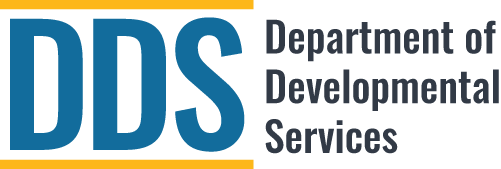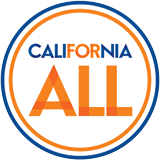Background
In 2016, ABX2 1 (Chapter 3, Statutes of 2016) added Welfare and Institutions (W&I) Code section 4519.5(h), which allocated $11 million to the Department of Developmental Services (Department) to assist regional centers (RCs) in the implementation of strategies to reduce disparities in regional centers’ purchase of services (POS). The FY 2017/18 developmental services trailer bill (AB 107 [Chapter 18, Statutes of 2017]) amended W&I Code section 4519.5 to allow community-based organizations (CBOs) to also receive disparity funds. The Department remains committed to learning more about the challenges consumers and families face in accessing services, and using existing resources to make measurable progress in reducing disparities in POS authorizations, utilization, and expenditures.
Disparate Access to Services
The issue of access to services for individuals with developmental disabilities from diverse communities has been the subject of conversation and study during much of the past two decades. Studies conducted by universities, other research organizations, the Department, and RCs consistently find that communities of color are less likely to receive RC services, and receive lower than average (per capita) POS, compared to individuals who identify as White. The causes of these disparities continue to be examined; however, statewide stakeholder meetings, local community meetings, and family testimonies have identified several themes, including:
- Supply of culturally and linguistically appropriate and accessible information, service options, providers.
- Cultural barriers and discomfort challenging authority figures prevent some families from requesting needed services and exercising their rights.
- Mistrust of public systems by some communities of color.
- Socioeconomic factors that present challenges to accessing RC services.
Community-Based Organizations Outreach
Outreach efforts to community-based organizations that represent groups impacted by disparities will include:
- Participation in community meetings conducted in multiple locations throughout the state.
- Dissemination of Disparity Funds Program grant guidelines to organizations known to the Department that represent and work with underserved communities.
- Sharing of Disparity Funds Program information with the Director’s Disparities Advisory Group, which includes representatives from community-based organizations, advocacy organizations, RCs and Department staff.
- Posting of Disparity Funds Program information on the Department’s website.
Statewide Strategies
California statute requires RCs to collaborate annually with the Department to gather data related to each RC’s POS authorization, utilization, and expenditures. RCs are also required to meet annually with members of their local communities to discuss the data and improvements in services provided to underserved communities, and report the outcomes of the meetings to the Department. The Department uses this information, along with stakeholder input gathered through Department-sponsored community meetings, monitoring activities and the Director’s Disparities Advisory Group, when funding projects to develop statewide strategies for addressing disparities. In addition, the effectiveness of existing disparity activities is evaluated to assist in determining Department priorities.
Use of Funding
Approved project funding may only be used for activities that RCs are otherwise required by statute or regulation to conduct. Each proposal will be subject to an evaluation by a review committee consisting of Department of Developmental Services, Department of Rehabilitation, and Disability Rights California staff. The proposal review process will include scoring criteria (in areas such as, but not limited to, the applicant’s description of how funds will address challenges and problems specific to the project’s target population, how community input and feedback guided the project proposal, how it will guide project implementation, and how the project will be evaluated to show its effectiveness).
Project Evaluation
Each organization with approved funding is required to submit quarterly status reports, throughout the life of the project, in a format determined by the Department. The Department will evaluate status reports to ensure funding is being used in accordance with state rules, sufficient data is being collected to measure the project’s effectiveness, and the project’s goals and objectives are being achieved. On an annual basis, grantees must also submit a comprehensive evaluation report that details the effectiveness of the project in reducing disparities in POS expenditures.
The Department initiates discussions with organizations that are not meeting project goals and objectives, and determines if continued project funding is appropriate.
Last modified: September 10, 2019



